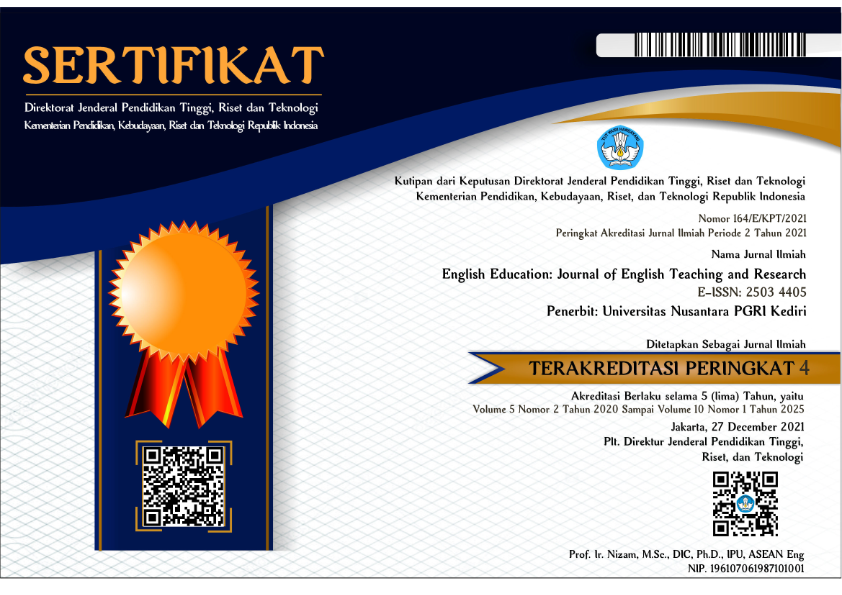Do Bamboo Dancing Technique Affect the Students’ Speaking Ability?
DOI:
https://doi.org/10.29407/jetar.v1i1.279Abstract
The problems of this research were to know the students’ speaking ability before and after they taught by use bamboo dancing technique. This experimental research was conducted at the XI IPS 3, consists of 28 students, eleventh grade at SMAN 1 GondangNganjuk in academic year 2014/2015. The research data were collected using pre test and post test. The research results showed that the students’ score of pre test is 1576. The mean of students score of pre test is 56.28 and the students’ speaking ability after taught by using bamboo dancing technique is better more than before taught. Because the students’ score in post test is 2292 and the mean of students’ score in post test is 81.85. It can be said that the students’ score is increasing after they are taught by using bamboo dancing technique in teaching speaking. The t-score computation showed that the t-score is 19.196 at degree of freedom 27 and t-table is 2,771 at the level of significance 1% and 2,052 at the level of significance 5%. It means that t-score (19,196) > t-table at the level of significance 1% (2,771) and t-score (19,196) < t-table at the level of significant 5% (2,052). So the t-score is higher than t-table in significance 1% and 5%. Therefore, the alternative hypothesis (Ha) is accepted and null hypothesis is rejected. It can be concluded that teaching speaking using bamboo dancing technique has significant effect to the student’s speaking ability
Downloads
Downloads
Published
Issue
Section
License
Authors who publish with this journal agree to the following terms:
- Copyright on any article is retained by the author(s).
- The author grants the journal, the right of first publication with the work simultaneously licensed under a Creative Commons Attribution License that allows others to share the work with an acknowledgment of the work’s authorship and initial publication in this journal.
- Authors are able to enter into separate, additional contractual arrangements for the non-exclusive distribution of the journal’s published version of the work (e.g., post it to an institutional repository or publish it in a book), with an acknowledgment of its initial publication in this journal.
- Authors are permitted and encouraged to post their work online (e.g., in institutional repositories or on their website) prior to and during the submission process, as it can lead to productive exchanges, as well as earlier and greater citation of published work.
- The article and any associated published material is distributed under the Creative Commons Attribution-ShareAlike 4.0 International License








 Article template
Article template



